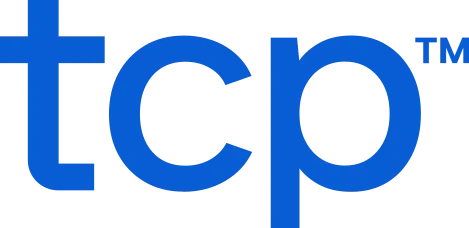Running a higher education institution takes more than managing classroom and course catalogs. Behind every successful semester are dozens to hundreds of employees keeping things running, including faculty, adjuncts, administrative staff, maintenance crews, student workers, and more. But getting control of employee scheduling in higher education? That’s where things often get complicated.
Class times shift, students drop or add courses, and the department changes mid-semester. Coordinating this dynamic workforce is like solving a constantly moving puzzle, and if that puzzle isn’t managed well, things can unravel quickly.
The challenges stack up fast — shift swaps, limited resource, labor contract compliance, etc. Whether you manage a university, community college, or technical school, this guide will walk you through these hurdles in higher ed employee scheduling and how to overcome them.
The challenges of employee scheduling in higher ed
Higher education? Higher scheduling challenges. There’s a constant balance between schedule flexibility, fairness, and compliance when it comes to how to employee scheduling in higher ed. Everyone has different roles, contracts, and expectations, but they all need to work in sync.
If staff scheduling falls through the cracks, the disruption can have ripple effects across your campus. Mismatched shifts, last-minute changes, or overworked employees affect morale, budgets, and the student experience.
Let’s break down what makes higher education employee scheduling so complex.
Managing multiple employee types
Higher education has a broad mix of staff — from tenured professors to part-time student workers — with each role requiring a different approach when it comes to employee scheduling.
Some employees are on year-round contracts, while others work just a few hours a week or during specific academic terms. To add to the already dynamic environment, you’ve got staff scheduling needs for research obligations, class prep time, leave of absence requests, union policies, and shift-based workers. Here’s a detailed breakdown of what different types of higher ed employees need from your scheduling process:
- Faculty (Tenured or Tenure-Track) – Need predictable teaching schedules, often determined by department course offerings. Schedules must also include office hours, research time, and committee work. Many follow strict academic calendars.
- Adjunct Professors – Typically teach one or two courses per term, often at multiple institutions. Their availability may be limited and is usually subject to workload caps based on credit hours or union agreements.
- Researchers – May have flexible hours, but their availability can shift depending on grant cycles, lab schedules, or travel. Coordination with faculty schedules and lab staff is often mandatory.
- Administrative Staff – Often work full-time during business hours, but some roles require staggered shifts (think admissions, financial aid, or IT). Union rules or overtime policies frequently apply.
- Facilities & Operations Staff – Cover campus security, maintenance, custodial work, and other critical services. These employees often work nights, weekends, and rotating shifts, and they’re the most likely to need precise, mobile-friendly schedules.
- Student Workers – Have limited availability tied to their academic schedules and may be subject to federal work-study hour restrictions. Their assignments often change mid-semester, so they need flexibility and oversight to stay within the required limits.
When you recognize each group’s specific scheduling needs, it becomes clear why a flexible, centralized system is so important. It’s not about applying the same rules to everyone; it’s about building a more innovative process that supports the whole workforce.
Maintaining compliance with labor and contract rules
Compliance touches nearly every schedule you create, yet it’s often overlooked as another box to check. Labor laws compliance, union agreements, and faculty contracts define what employees can do, when they can work, and how workloads are distributed.
Adjunct faculty might be capped at a certain number of hours or credits. Full-time professors have negotiated teaching loads, while administrative staff might follow union-negotiated limits. Your institution could face serious consequences if these details aren’t factored in during higher ed scheduling.
By weaving compliance rules into your scheduling process from the start, you stay ahead of the risks and build trust across departments.
Coordinating student worker scheduling
Student workers are essential to campus life. They keep libraries running, help staff dorms, support athletic events, and more. But their schedules? Not exactly predictable.
Academic calendars, exams, and extracurriculars mean availability can shift weekly. You’ll also need to respect employment rules for minors, federal work-study limits, and avoid overscheduling. Your institution needs responsive tools that keep precise track of hours and shift with students’ needs or academic commitments.
Working within limited budgets and facilities
Let’s be honest — no one in higher education is swimming in extra funding. Budgets are tight, and resources are stretched. From personnel to classroom space, you have to stretch your resources every semester.
That’s why building an employee scheduling is way more than filling time slots. It’s about optimizing every hour and every room. It’s hard to identify where time or money is lost without a clear picture of how staff and spaces are used.
A better scheduling process — you guessed it — gives you the visibility you need.
5 best practices for higher ed employee scheduling
Before you bring in automation, it helps to solidify your scheduling strategy. From smart scheduling to student worker schedules to using data insights for workforce planning, we’ll share a few examples of fellow higher education institutions using our best practices for employee scheduling.
Centralize scheduling across departments
Siloed scheduling leads to confusion. When departments operate independently, it’s like a constant game of telephone to align coverage, avoid conflicts, or reallocate resources where needed.
Centralizing your scheduling through a shared platform or unified policy brings visibility and control. It makes it easier to spot open shifts, redistribute workloads, and respond to last-minute changes without disrupting entire departments.
Align with labor contracts and policies
The last thing you want is to build schedules that ignore labor contracts — violations can lead to grievances, legal consequences, or damage to employee trust and employee retention.
Instead, develop scheduling templates that reflect your institution’s rules and agreements. This might include caps on hours, restrictions on overtime, or minimum rest between shifts. When these guidelines are part of your scheduling framework, they become second nature — not something you must check afterward. This approach protects your people and your institution.
Keep communication open and flexible
Life isn’t static and neither are schedules. Your team needs a fast, reliable way to respond when they do.
Let employees submit availability, trade shifts, or request changes through a central system. Push updates directly to mobile devices or dashboards so no one misses a change. Making communication part of the process eliminates guesswork and builds stronger, more collaborative teams.
Make student worker scheduling smarter
Student workers are a big part of your workforce, but their needs are unique. Their primary job is being a student, which means work has to fit around their education, not the other way around.
Your scheduling tools should sync with course schedules or block out unavailable times. Smart scheduling incorporates work-study eligibility and caps hours automatically to avoid overages.
Most importantly, make sure student workers can view, adjust, or confirm their schedules without needing to jump through hoops. This keeps things simple, clear, and, above all, compliant.
Leverage data-driven insights for better planning
Smart scheduling isn’t just about managing the week ahead, it’s about using what you’ve already seen to shape what comes next. Every schedule you build creates data. And with the right tools, that data becomes a powerful asset.
Instead of guessing how many staff members you’ll need next semester or whether a certain department is being stretched thin, you can use real metrics to guide your decisions. From overtime patterns to peak usage times, these insights help you plan more accurately and avoid burnout or overstaffing.
Here’s how data can improve your scheduling process:
- Spot staffing trends – Identify which roles or departments regularly face shortages, then build schedules that address those gaps.
- Track labor costs – Understand where overtime is happening and how it impacts your budget.
- Measure coverage vs. demand – See how well your staffing levels align with class schedules, facility usage, or service hours.
- Forecast seasonal shifts – Use historical patterns to prepare for busy periods like enrollment, finals, or graduation.
- Inform cross-department planning – Share data across teams to reduce silos and coordinate resources campus-wide.
When data informs scheduling — not just habit or guesswork — you create a better system over time. Instead of reacting to what’s in front of you, you’re planning for what’s coming next.
How to use employee scheduling software in higher ed
Once your process is solid, the right tools take it further. Employee scheduling software is designed to bring clarity, automation, and accountability to a task that’s too complex for manual methods.
Higher education institutions increasingly lean on these solutions to reduce administrative load and keep pace with evolving demands.
Why manual scheduling falls short
Timesheets have their place, but scheduling isn’t it. They’re static, prone to human error, and difficult to update at scale. To put it simply, they’re not smart.
They can’t flag contract violations, prevent overscheduling, or provide real-time updates. One unexpected change and your whole plan can unravel. With manual scheduling tools, your team spends more time fixing problems than preventing them.
And when multiple departments use different tools? Good luck.
How employee scheduling software solves manual problems
Modern platforms solve the needs of employee scheduling in higher ed and are built to handle the moving parts of campus operations. They streamline processes, simultaneously reducing errors and making it easier to adapt to each group’s needs.
With scheduling software, you can:
- Build shift patterns around staff availability and contract limits
- Push real-time updates when schedules change
- Track student worker hours and automatically apply work-study rules
- Give employees access to self-service scheduling tools
- Spot open shifts, forecast needs, and reduce unnecessary overtime
Instead of reacting to scheduling issues, you’re preventing them.
Institution-specific benefits of scheduling software
No two campuses are exactly the same, whether you’re operating a large university, a two-year community college, or a specialized technical school. Each type of institution comes with its own structure, staffing patterns, and scheduling priorities.
Scheduling software needs to adapt to each environment without forcing a one-size-fits-all solution. Here’s how the right platform can meet the unique needs of different higher education institutions:
Scheduling software for universities
Large universities manage thousands of employees, including full-time faculty, adjunct instructors, researchers, and student workers. They often span multiple colleges or schools, each with its own scheduling workflows and departmental rules.
Scheduling software centralizes the scheduling process, while granting departments the flexibility they need. From cross-listed courses to rotating teaching loads, automation simplifies the complexity and keeps each college on track.
Scheduling software for community colleges
These institutions rely heavily on adjunct faculty and part-time staff, and course offerings can shift frequently based on enrollment. That means staffing decisions must be made quickly, often just weeks or even days before a term begins.
With scheduling software, administrators can assign workloads faster to align with student demand, maintain compliance with hour limits, and make real-time updates without disruption.
Scheduling software for technical schools
Scheduling in trade and technical schools is all about precision. Many programs involve hands-on labs, equipment-specific instruction, and student job placements that rotate on a set schedule. Instructors often split time between teaching and industry work, so the margin for error gets tight.
Scheduling software helps track lab capacity, assign instructors based on availability and certification, and align student workers with program requirements (minus the guesswork).
Across the board, the goal of scheduling software is the same: keep institutions organized, flexible, and compliant, while making the experience better for staff, students, and administrators. Whether your campus serves hundreds or tens of thousands, employee scheduling software should match to your unique needs and grow with you.
Employee scheduling checklist for higher education institutions
Not sure where to start for staff scheduling? Here’s a quick-hit checklist that supports employee scheduling in higher education and helps optimize your institution’s scheduling process:
- Standardize your process across departments
Share protocols and workflows so every team works from the same playbook, from admissions to facilities. With a centralized process, monitoring overall staffing levels easier and coordinating cross-campus coverage is easier. - Build scheduling templates that reflect contracts and policies
Templates should incorporate key rules such as maximum teaching loads, union-mandated break times, or part-time hour limits. These templates reduce the risk of accidental violations, while making managers’ jobs easier to schedule. - Optimize for real-time changes and compliance
Choose a software that automatically applies labor rules, alerts potential conflicts, and updates instantly when shifts change. Real-time capabilities ensure staff, faculty, and student workers always see the most current information without needing a dozen email threads to get there. - Offer self-service scheduling tools for staff and students
Most employees prefer to manage own availability, shift swaps, and time-off requests, so let them. This saves time for administrators and gives your workforce more autonomy. Look for software that includes easy-to-use portals or mobile apps so that staff and students can manage their schedules on the go. - Track student worker eligibility, hours, and academic conflicts
Student workers have unique constraints — from course loads to work-study caps — and staying within those limits is critical. Build tracking and eligibility checks into your system to prevent overscheduling. Some tools can even sync with academic calendars or flag overlapping commitments before they become an issue. - Use scheduling data to improve workforce planning
Your scheduling system should do more than assign shifts, it should show you patterns. Use built-in reporting features to spot peak demand periods, common absences, and recurring coverage gaps. These insights can guide smarter staffing decisions, forecast future needs, and help you allocate resources where they’ll have the most significant impact. - Regularly audit and adjust based on demand and feedback
Check in regularly to make sure your staffing levels are aligned with current needs. Get feedback from employees, review past performance, and make adjustments where necessary.
Use this checklist as your starting point — combining these practices with the right technology will help you build a system that works today and scales tomorrow.
Rethink your approach to employee scheduling in higher ed
We’ve unpacked the complexity of higher ed employee scheduling — and just like managing a busy semester, it’s a constant balance of moving parts. Class rosters shift, staff needs evolve, and new challenges pop up at every turn.
The right scheduling and tooling solves both today’s and tomorrow’s challenges, building a more flexible, resilient foundation for the future of your entire campus. Modern employee scheduling software puts you ahead of demand and in control of communication, so your staff spends less time on schedules and more time working on what matters.
When your schedules run smoothly, so does your campus.
TCP Software’s employee scheduling, time, and attendance solutions are flexible and scalable to accommodate your organization and employees as you grow.
From TimeClock Plus, which automates even the most complex payroll calculations and leave management requests, to Humanity Schedule for dynamic employee scheduling that saves you time and money, we have everything you need to meet your organization’s needs, no matter how unique.
Plus, with Aladtec, we offer 24/7 public safety scheduling solutions for your hometown heroes.
Ready to learn how TCP Software takes the pain out of employee scheduling and time tracking? Speak with an expert today.


